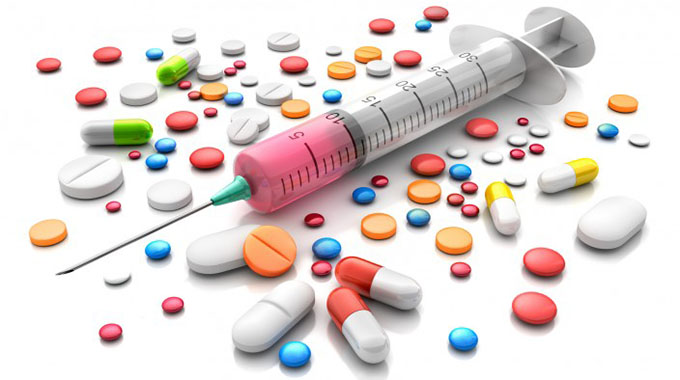EDITORIAL COMMENT: Pharmaceutical industry rebuild needs care

Zimbabwe’s pharmaceutical industry was built up in the days when import substitution was a major force during the UDI era and then flowered during the early years of independence as contact was re-established with major suppliers and the health authorities introduced the essential drugs list that, in effect, gave a guaranteed market for more than 90 percent of drug requirements.
And then, like other sections of Zimbabwean industry, it largely died and is an extreme example of how a high-tech industry can be killed by neglect, the wrong sort of controls, the lack of reinvestment, the economic challenges that came through with hyper-inflation, the switch to dollarisation and poor management in the public health sector.
All are being fixed now but there are still additional complications.
Medicines are pretty much as essential as you get.
This meant that when foreign currency was being rationed by decree or bureaucratic whim, the importers of medicines did get a high level of priority.
So as factories tapered off production as equipment broke down, management fouled up and price controls wrongly applied made things worse, drugs were imported.
And people were prepared to pay, not willingly but when the option was to die families would beg or borrow the money, even if this was to fill prescriptions issued by public sector hospitals and clinics but which had to be filled in the private sector because NatPharm was out of stock, sometimes for reasons which the present corruption investigations and high management changeover have highlighted.
People also went on shopping trips to neighbouring countries with prescriptions, or got relatives to fill the prescriptions and send the parcel by courier.
There are no customs duties on prescription drugs so again this direct importing was viable.
Even when the entire pharmaceutical sector switched to charging in US dollars, people would still break the law and buy US dollars on the pavement.
Even now, when most medication can be bought in local currency because the auction system does put pharmaceuticals on a high priority list so all bids for these products are accepted and filled, there was until a couple of weeks ago a general trend in the sector for a black-market rate to be used, or at least a rate that was well above the auction rate.
In fact, it took a couple of legal changes for the sector to start accepting local currency and for the exchange rate to be changed to the official rate.
But all this meant that there was and is a great deal of vested interest in maintaining that system of direct import for just about everything that a hospital or clinic might need and that sort of vested interest needs to be overcome as the local pharmaceutical manufacturing industry is rebuilt.
There have been complaints that there is what some describe as a cartel controlling a lot of imports and setting the mark-ups, which appear in many cases to be far higher than the mark-ups pertaining in neighbouring countries.
A secondary problem is the rise of new drugs.
The global industry has seen a lot of research, so there have been a lot of new products over the last few decades and many of these have moved into some degree of affordability as patents expire and new generics are made and sold. To a large extent this means that a list of 100 essential drugs, that used to be able to cope with more than 90 percent of any prescribing doctor’s requirements, now needs to be extended.
Even when just one drug might work, doctors have been finding that splitting the prescription between two or three drugs that all have similar medical effects but quite different side effects means that there is far better control of side-effects, giving the patient the same benefit but with just three minor side-effects rather than one serious side-effect.
But all that said, there is an obvious opportunity to resuscitate the local manufacturing industry at least for the 100 plus most common drugs and such a resuscitation should be able to at least bring pricing under control, with fair mark-ups but no profiteering, and that in turn can help control health costs for everyone’s benefit.
One useful way to look at pricing formulas could be to follow the British model. When the national health service in that country puts out a tender it wants to know the precise manufacturing costs for generics, and these are checked. It then applies a permitted mark-up. That formula stops a manufacturing scrimping on safety, but keeps costs within bounds. Admittedly in such a large market there is normally more than one potential manufacturer so competition controls the costing.
Zimbabwe’s pharmaceutical industry if resuscitated will be able to make some drugs from basic raw materials, but for others might become more of a bulk buyer, mixer and packager. But that will still mean many costs are local.
However, we cannot just reopen factories and restart production; the industry basically has to be rebuilt from scratch. Since medicines have to be basically perfect, the United Nations Industrial Development Organisation was brought in to look at the eight local manufacturing plants, Two achieved a B grade out of the three grades and six totally flunked with a C grade. No one made the A grade that means that standards set by the World Health Organisation were met in full.
So, the whole resuscitation programme requires several approaches. First is the commitment already given, that the public sector is keen on giving local orders so volume problems are solved. But it will require a cost-plus pricing scheme with checks to ensure viability.
Then investment has to be made into manufacturing equipment and factories backed by those viability commitments.
Using Unido as the external independent auditor of the factories was a smart move and probably needs to be retained, both to ensure that a factory is okay before it delivers drugs after re-opening and then passing regular checks to ensure standards are maintained. Local needs to mean better, as well as cheaper.
The Government strategy of a step-by-step rebuild of local production thus appears to be the right one but it will require close co-ordination of the investors and the Health Ministry along with the local regulator, the Medicines Control Council.
And it will require a change in attitude by some in the sector as well as the necessary safety guarantees that will ensure public acceptance.
But the gains are so large that we now all need to accept this is the future and start putting it in place, and this time doing it right.











Comments